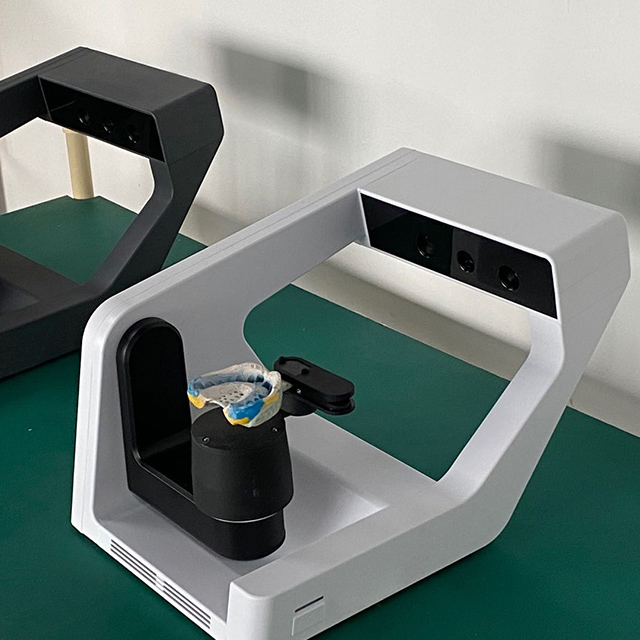dental lab cad cam
Where to Get Dental Lab Equipment for Aligner Fabrication
Clear aligners have become a popular choice for people who want to straighten their teeth without the look of metal braces. As more people choose this option, dental labs play an important role in making these custom-made devices. In this blog post, we will talk about the necessary equipment for making aligners in a dental lab and explain the step-by-step process. We will also mention where to find high-quality dental lab equipment from trusted suppliers like Dental Laboratorio.
Essential Equipment for Aligner Fabrication:



- 3D Scanner: A 3D lab scanner is needed to create digital images of the patient’s teeth or plaster models. This scanner captures precise images, which are used to design the aligners.
- Computer-Aided Design (CAD) Software: Special CAD software is used to create digital models of the patient’s teeth and plan the tooth movements. This software helps technicians see the desired result and design the aligners.
- 3D Printer: Once the aligner designs are ready, a 3D printer is used to create physical models of the patient’s teeth at each stage of treatment. These models are used to make the actual aligners.
- Curing light: Cure the resin model using a curing UV light to ensure the resin hardens completely.
- Thermoforming Machine: A thermoforming machine is used to shape the clear plastic material over the 3D-printed models, creating the custom-fit aligners. The machine heats the plastic and uses vacuum pressure to form it around the models.
- Trimming and Polishing Tools: After the aligners are formed, they need to be trimmed and polished for a smooth and comfortable fit. Dental labs use various trimming tools and polishing equipment for this purpose.
Aligner Fabrication Procedure:
1. Digitizing Dental Impressions: The process starts with scanning dental impressions or plaster models using a 3D scanner to create digital representations of the patient’s teeth.
2. Treatment Planning: Using CAD software, the technician plans the tooth movements needed to achieve the desired alignment. This involves determining the number of aligners and specific movements for each stage.
3. Designing Aligners: Based on the treatment plan, the technician designs the aligners in the CAD software. Each aligner applies gentle pressure on specific teeth, gradually moving them into place.
4. 3D Printing Models: The aligner models are sent to a 3D printer, which creates physical models of the patient’s teeth at each treatment stage. These models are usually printed with biocompatible resins.
5. Curing and Sterilization: After 3D printing, the resin model is cured using a curing light to harden the resin, ensuring stability and precision. Subsequently, the model is cleaned and sterilized to remove any residual resin and maintain a safe, sterile environment for aligner fabrication.
6. Thermoforming Aligners: The 3D-printed models are placed in the thermoforming machine, and clear plastic material is heated and molded over each model using vacuum pressure. This creates the actual aligners.
7. Trimming and Polishing: The aligners are trimmed to remove excess material and ensure a precise fit. The edges are then smoothed and polished for comfort.
7. Quality Control: Before sending the aligners to the dentist, they are inspected for accuracy, clarity, and quality to ensure the best outcome for the patient.
Where to Get Dental Lab Equipment
For dental labs looking for reliable and high-quality equipment for aligner fabrication, Dental Laboratorio is a professional dental lab supplier offering a wide range of products worldwide. They provide everything from 3D scanners and handpiece to 3D printers and thermoforming machines.
1. Wide Range of Products: Dental Laboratorio offers a variety of dental lab equipment and supplies to meet different needs and budgets.
2. Global Delivery: They deliver products worldwide, ensuring timely and reliable delivery no matter where your dental lab is located.
3. Professional Support: Dental Laboratorio offers expert support and guidance to help you choose the right equipment for your lab and assist with setup and maintenance.
4. Quality Assurance: All products offered by Dental Laboratorio undergo strict quality checks to ensure they meet industry standards.
Conclusion:
Making aligners in a dental lab requires advanced technology and skilled craftsmanship. With the right equipment and a clear fabrication process, dental labs can efficiently produce high-quality aligners for each patient. As the demand for clear aligners grows, dental labs play a crucial role in helping dentists and orthodontists deliver excellent results and transform smiles.
